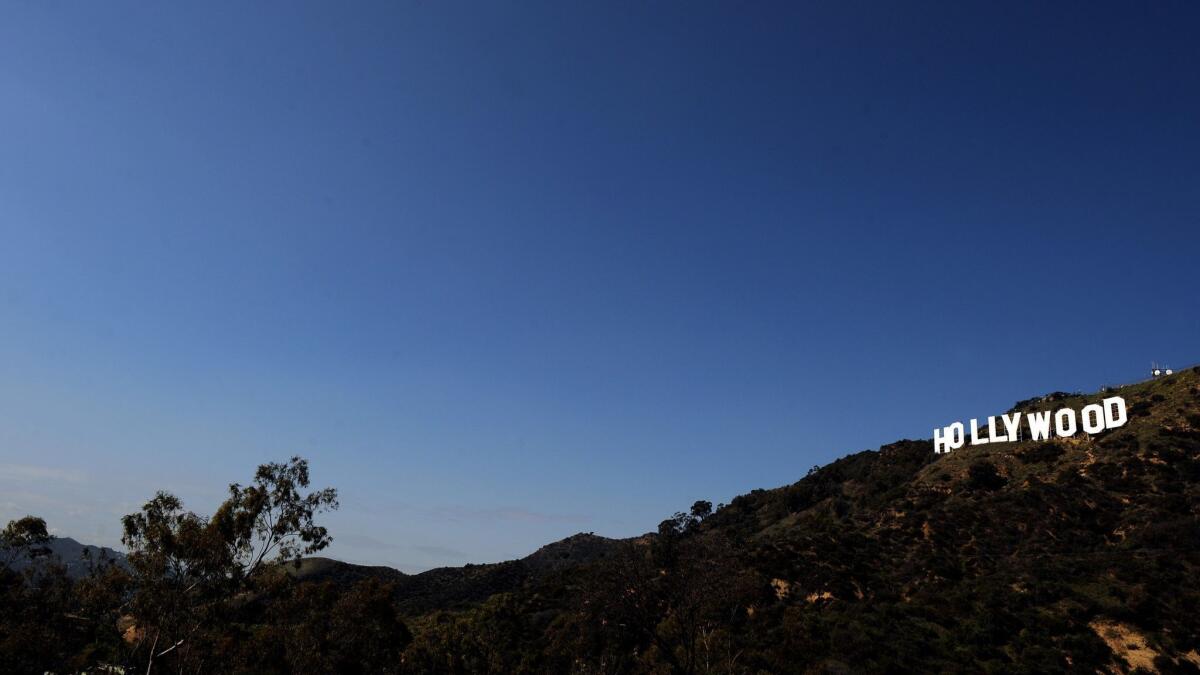California filming incentives are falling behind the competition, new study says

- Share via
California taxpayers shell out $330 million each year in financial incentives intended to persuade Hollywood to roll its cameras closer to home. But even after boosting handouts to the film industry, California is still having a tough time keeping up with the competition, according to a new study.
The Milken Institute said in a new report released Thursday that Georgia and New York continue to give California a run for its tax dollars when it comes to attracting major Hollywood productions. In addition, the United Kingdom’s lucrative filming incentives are outpacing California’s, resulting in more lost production dollars.
The report recommends that California increase its annual financial incentives to match or exceed New York’s $420 million a year. It also recommends that the state devote more money to larger-budget movies and independent films.
California’s tax program has successfully attracted many new and continuing TV series, helping to fuel a surge in TV production around the state.
But feature film production hasn’t experienced a similar bounce, despite some high-profile shoots including Paramount’s “Bumblebee” and Disney’s “Captain Marvel” electing to shoot in California.
Lawmakers more than tripled the annual film and TV tax credits to $330 million from $100 million two years ago. The current program is set to expire in 2020, though there are multiple legislative initiatives in the works to extend the program.
Filmmakers can recoup as much as 25% of their spending (up to the first $100 million) on crew salaries and other qualified costs, such as building sets. Studios can then use such credits to offset state tax liabilities they have in California.
The tax credits apply only to so-called below-the-line expenditures, such as equipment and crew. They don’t include the salaries of major stars and directors.
The Milken study recommends reducing the amount of credits available to ongoing television shows to ensure funds are available for new television productions.
“The intent of such a recommendation would be to incentivize the show to find the cost of remaining local to be better than any effort at relocating, while also making additional funds available to attract and retain newer shows,” the report said.
California lags behind Georgia in attracting major Hollywood movie shoots.
“Georgia production continues to grow and poses a significant overall threat to not only television, but especially larger budget movies,” the report said.
In recent years, Georgia has attracted numerous blockbusters, including titles from Marvel Studios, including “Black Panther” and “Avengers: Infinity War.” TV shows that shoot in Georgia include AMC’s “The Walking Dead” and Netflix’s “Stranger Things.”
Britain also has drawn major Hollywood blockbusters, including all the recent “Star Wars” movies.
The Milken study recommends that California lower the minimum amount that feature films need to spend to qualify for tax credits. Many major Hollywood movies shoot in multiple locations, taking advantage of tax credits in different states and countries.
California requires that a movie spends at least 75% of its budget in-state, or that at least 75% of principle photography occurs in-state.
david.ng@latimes.com | Twitter: @DavidNgLAT
More to Read
Inside the business of entertainment
The Wide Shot brings you news, analysis and insights on everything from streaming wars to production — and what it all means for the future.
You may occasionally receive promotional content from the Los Angeles Times.











